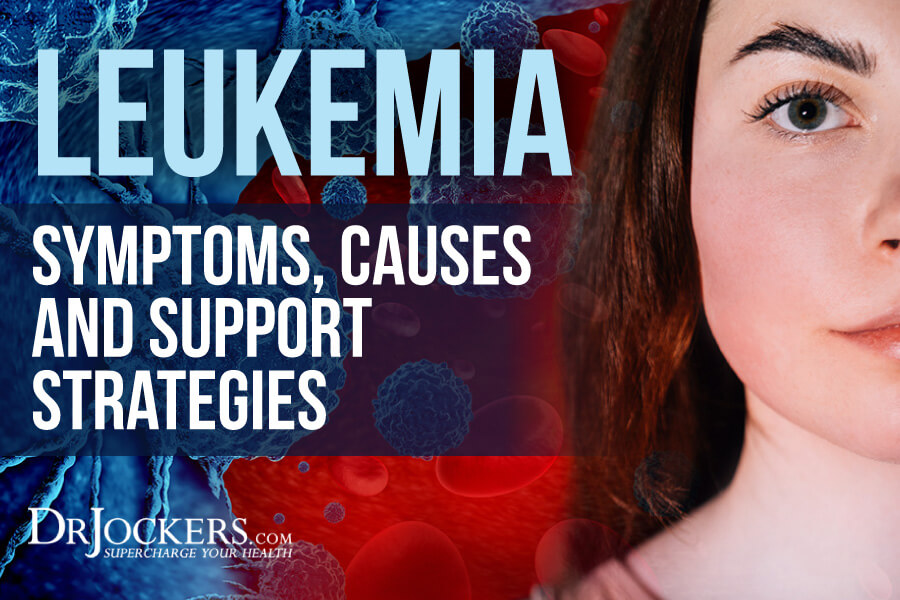 Leukemia: Symptoms, Causes, and Support Strategies
Leukemia: Symptoms, Causes, and Support Strategies
Leukemia is a cancer of your blood cells. If you have leukemia, your white blood cells cannot function as they should. They grow much more rapidly than they should and end up overcrowding your normal cells. Because they are unable to function properly, they cannot protect you from viruses, bacteria, toxins, and other pathogens as they should greatly compromise your immune system. The good news is that you can support your body with the help of some natural support strategies to optimize recovery and regain your well-being.
In this article, you will learn what leukemia is. I will go over the main types of leukemia. I will detail the signs and symptoms of leukemia. You will learn about the risk factors for leukemia. You will understand the diagnosis and conventional treatment options for leukemia. I will go over the functional root causes of leukemia. I will share my top natural support strategies for leukemia to support your health and well-being.
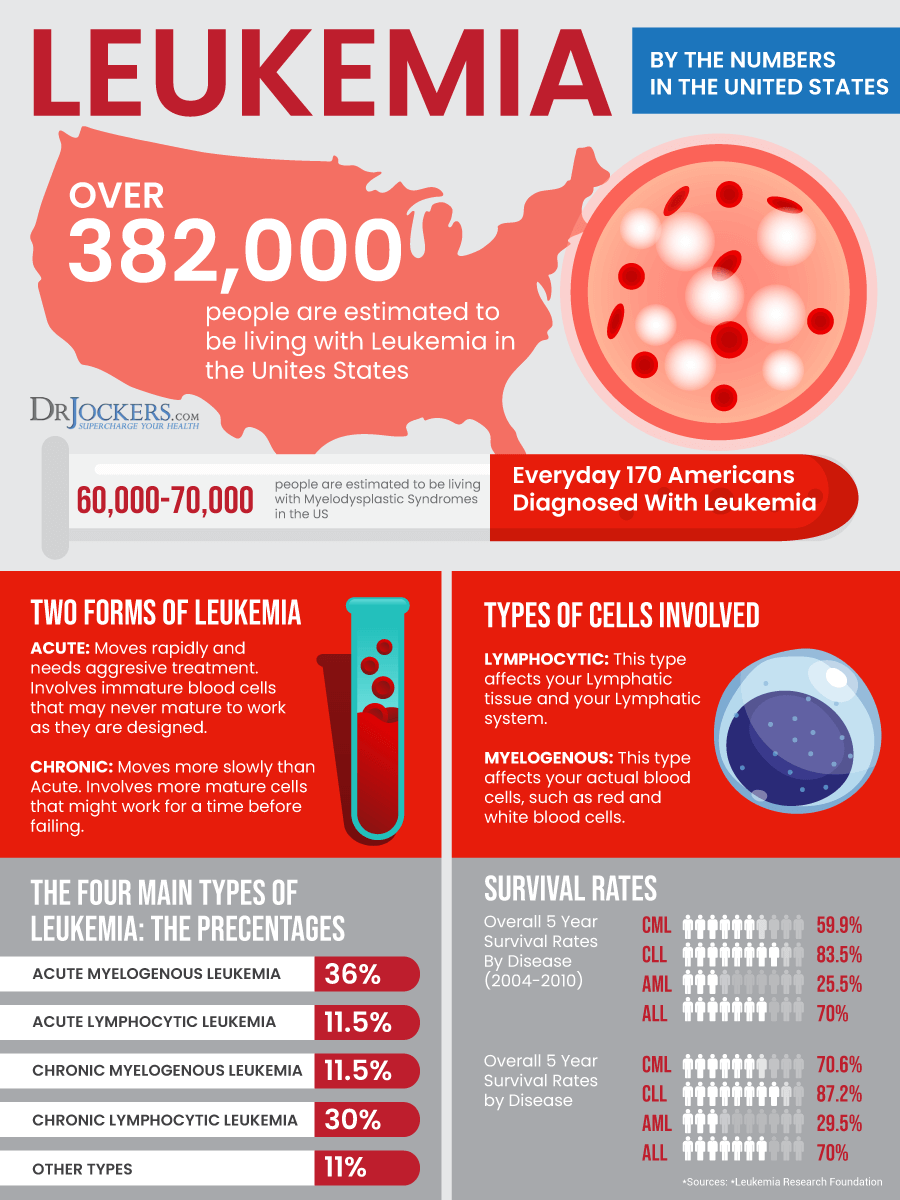
What is Leukemia
Leukemia is a cancer of your blood cells. You have different types of blood cells, including your white blood cells, red blood cells, and platelets. Leukemia generally affects your white blood cells.
Your white blood cells are a critical part of your immune system. Most of your white blood cells are created in your bone marrow. However, some white blood cells are produced by your lymph nodes, spleen, or thymus gland. Once your white blood cells are formed, they move through your bloodstream and lymphatic system to fight infections and other harm affecting your tissues.
They help to protect you from viruses, bacteria, fungi, toxins, abnormal cells, and other foreign pathogens. If you have leukemia, it means that your white blood cells are unable to function as they should. They divide more rapidly than healthy white blood cells do and, over time, end up crowding out normal cells (1, 2).
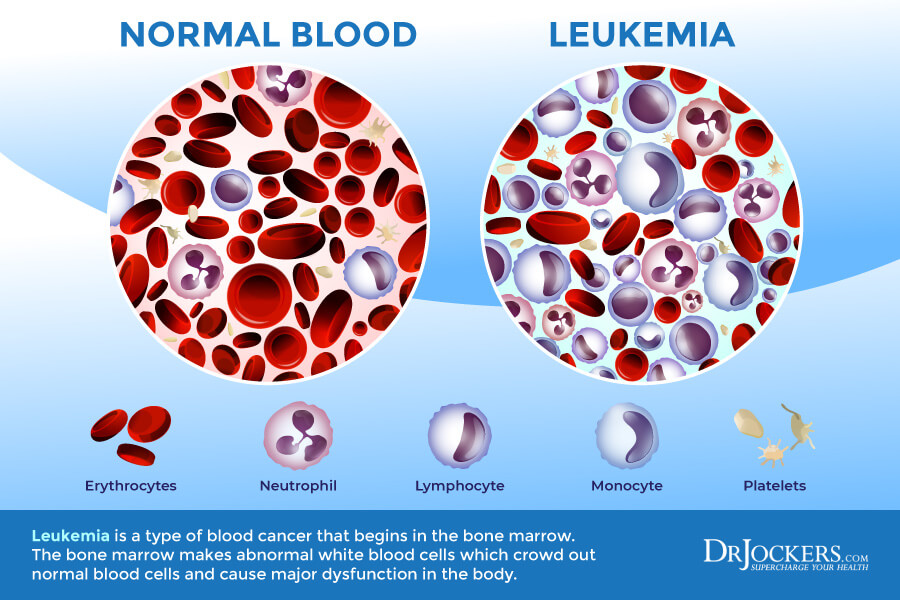
Types of Leukemia
When we talk about leukemia, we have to talk about its onset and what cells it’s affecting. The onset of leukemia can be very sudden or acute, where the cancer cells multiply very quickly, causing serious symptoms within a short period of time. In other cases, the onset of leukemia is slow or chronic, starting out with slow and mild symptoms progressing over time.
Different types of leukemia may also affect different cells. Myelogenous leukemia is a form of leukemia that affects your myeloid cells. There are immature blood cells that would turn into granulocytes or monocytes later. Lymphocytic leukemia affects your lymphocytes.
There are four main types of leukemia, including:
- Acute myeloid leukemia (AML): This form of leukemia may affect both adults and children. According to the National Cancer Institute (NCI), there are about 20,000 new cases a year in the US alone, making it the most common type of leukemia (3). It has about a 29.5 percent 5-year survival rate.
- Acute lymphocytic leukemia (ALL): This form of leukemia primarily affects children. According to NCI, there are about 6,000 new cases each year (4). It has a 70 percent 5-year survival rate.
- Chronic myeloid leukemia (CML): This form of leukemia mainly affects adults. According to NCI, there are 9,000 new cases each year (5). There is a 70.6 percent 5-year survival rate.
- Chronic lymphocytic leukemia (CLL): This form of leukemia mainly affects people over 55, and it’s extremely rare in children. According to NCI, there are 21,000 new cases each year (6). There is an 87.2 percent 5-year survival rate.
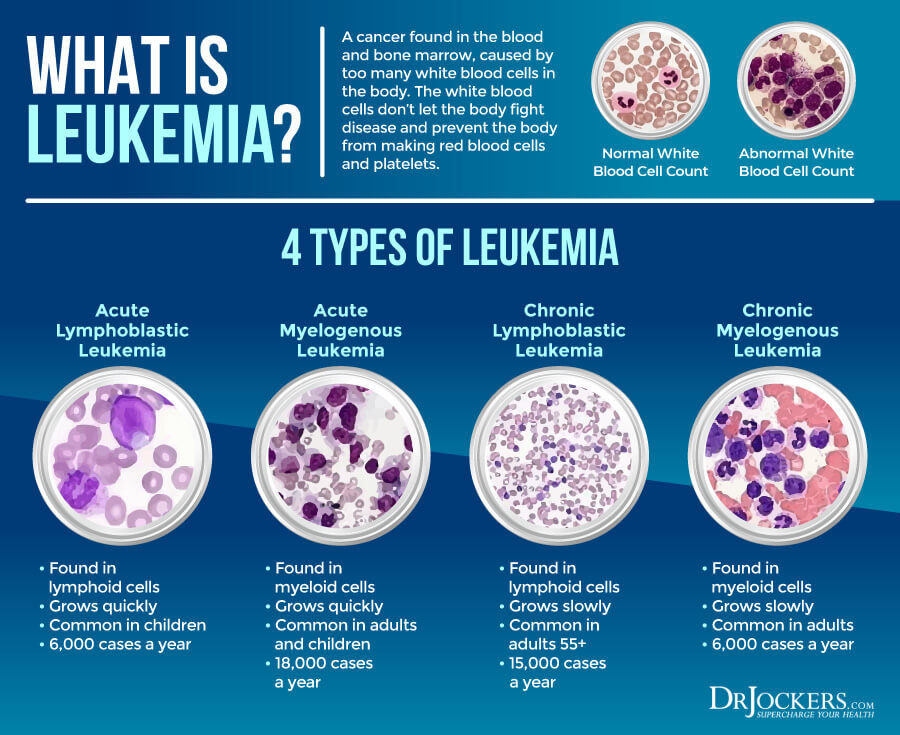
Major Symptoms of Leukemia
Major symptoms of leukemia may include (7):
- Fatigue and weakness that doesn’t improve even with rest or sleep
- Night sweats
- Weight loss without trying or a known cause
- Swollen but painless lymph nodes, mainly in the neck and armpits
- Bone tenderness and pain
- Bruising and bleeding easily
- Petechiae (red spots on the skin)
- Enlarged spleen or liver
- Frequent infections
- Chills
- Fever
Leukemia may affect organs near the affected area. If it spreads to your nervous system, it may also lead to other symptoms, including:
- Nausea
- Vomiting
- Headaches
- Confusion
- Seizures
- Loss of muscle control
Depending on what type of leukemia you have and how aggressive it is, it may spread to your lungs, kidneys, gastrointestinal tract, heart, and testicles. If it does, it may cause symptoms affecting these areas.
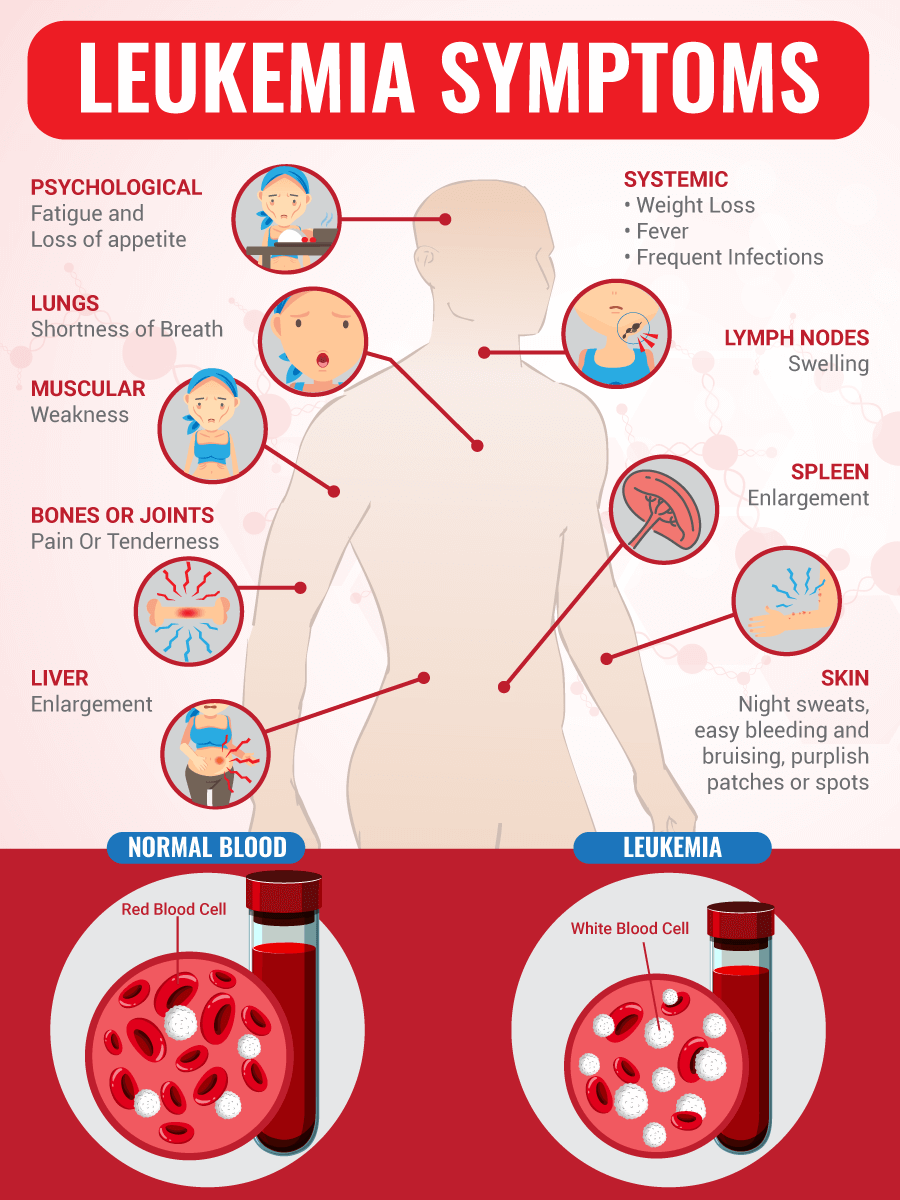
Risk Factors for Leukemia
The exact cause of leukemia is not entirely understood. However, certain factors may increase your risk. Risk factors for leukemia may include (8):
- Having had chemotherapy or radiation for other kinds of cancers
- Other blood disorders or blood cancer disorders, including myelodysplastic syndrome
- Genetic disorders, including Down syndrome
- Family history of leukemia
- Chronic exposure to chemical benzene, a chemical found in cigarette smoke
- Smoking
- Exposure to high radiation
- Females have a higher risk
- Risk factors may increase with age

Diagnosis and Conventional Strategies
To diagnose leukemia, your doctor will go over your symptoms, health history, and family history. If there is a concern, they will likely run some blood tests, including a complete blood count (CBC) checking your red blood cells, white blood cells, and platelets. Testing will likely include some biopsies and imaging tests. A bone marrow biopsy and aspiration are usually necessary for final diagnosis (9).
Biopsies of other organs and imaging may be necessary to see if cancer has spread elsewhere and to stage your cancer. To check the progress of your leukemia, other tests, including a lumbar puncture, flow cytometry, liver function test, x-rays, ultrasounds, or CT scans, may be needed (10).
Leukemia patients are treated by a hematologist-oncologist doctor who specializes in blood disorders and cancers. The treatment protocol depends on the type of leukemia, stage of cancer, your overall health, and your health history.
In some cases, leukemia is slow-growing and may not require immediate treatment. In most cases, however, it tends to involve one or several of the following conventional strategies (11):
- Chemotherapy: Using one or a combination of several chemotherapy drugs to kill leukemia cancer cells.
- Radiation therapy: using high-energy radiation to stop the growth of leukemia cancer cells and damage and kill them.
- Stem cell transplantation: Using stem cell transplant or bone marrow transplant to replace the damaged bone marrow with new, healthy bone marrow from your own or donor cells.
- Biological or immune therapy: Using biological or immune therapy to force your immune system to note and fight cancer cells.
- Targeted therapy: Using medication to target the vulnerabilities of the cancer cells.
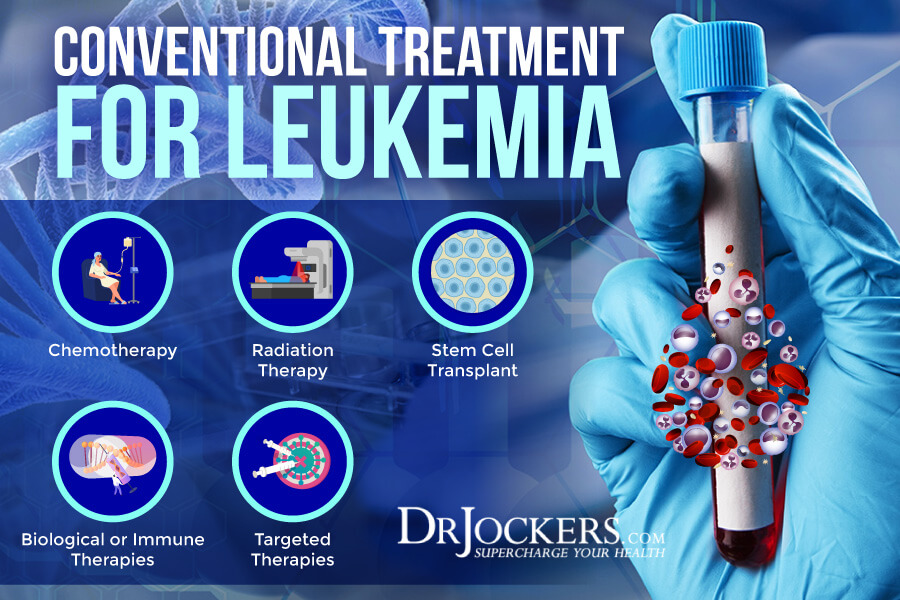
Functional Root Causes of Leukemia
Now that you understand the risk factors for leukemia, let me go over the functional root causes of leukemia. While these functional factors may not necessarily directly cause leukemia, they can increase your risk of developing health problems that can increase your risk of leukemia.
Understanding these root causes of leukemia is critical to improving your health. Each person is unique and one or more of these factors can be at the root of the problem.
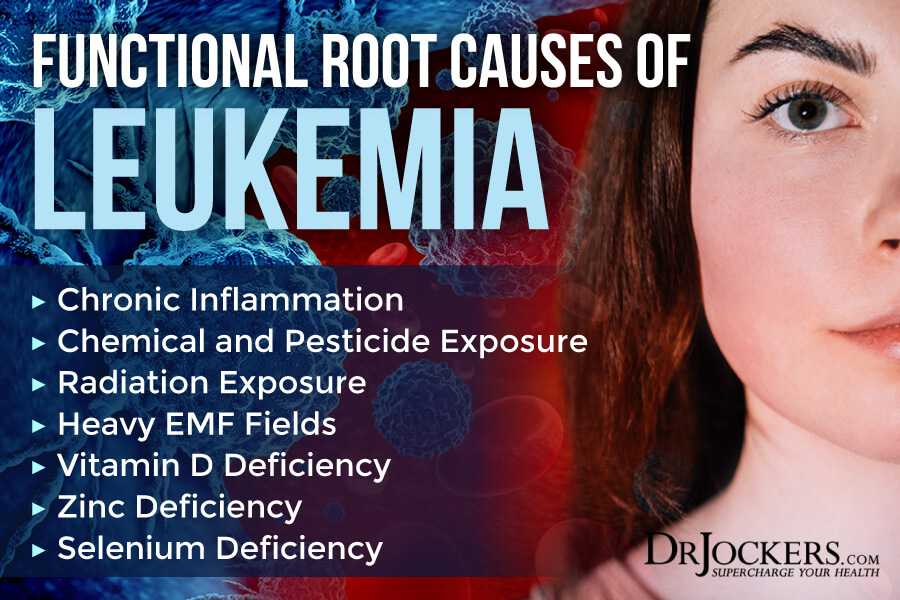
Chronic Inflammation
Chronic inflammation is the main functional root cause of most chronic diseases and cancers. Chronic inflammation may also play a role in the development of leukemia.
A 2016 study published in Cell Stem Cell has found that inflammatory signals in the bone marrow tumor environment may predict whether one will develop leukemia (12). Researchers found this to be true for both mice and humans.
According to a 2017 study published in Frontiers in Oncology, inflammatory signals as a response to infections and other environmental stressors can trigger hematopoietic stem cells (HSCs) which are a subset of bone marrow cells (13). This may trigger the HSCs to make cytokines and send them to the bone marrow, which may increase the risk of leukemia.
A 2018 study published in Cancers (Basel) has also found that chronic inflammation can cause or worsen the myeloid hematologic malignancies and may increase the risk of leukemia (14). A 2018 review published in Cell Death and Differentiation has found that necroinflammation can impact the HSCs and can increase the risk of hematopoietic cancers, including leukemia and lymphoma (15).
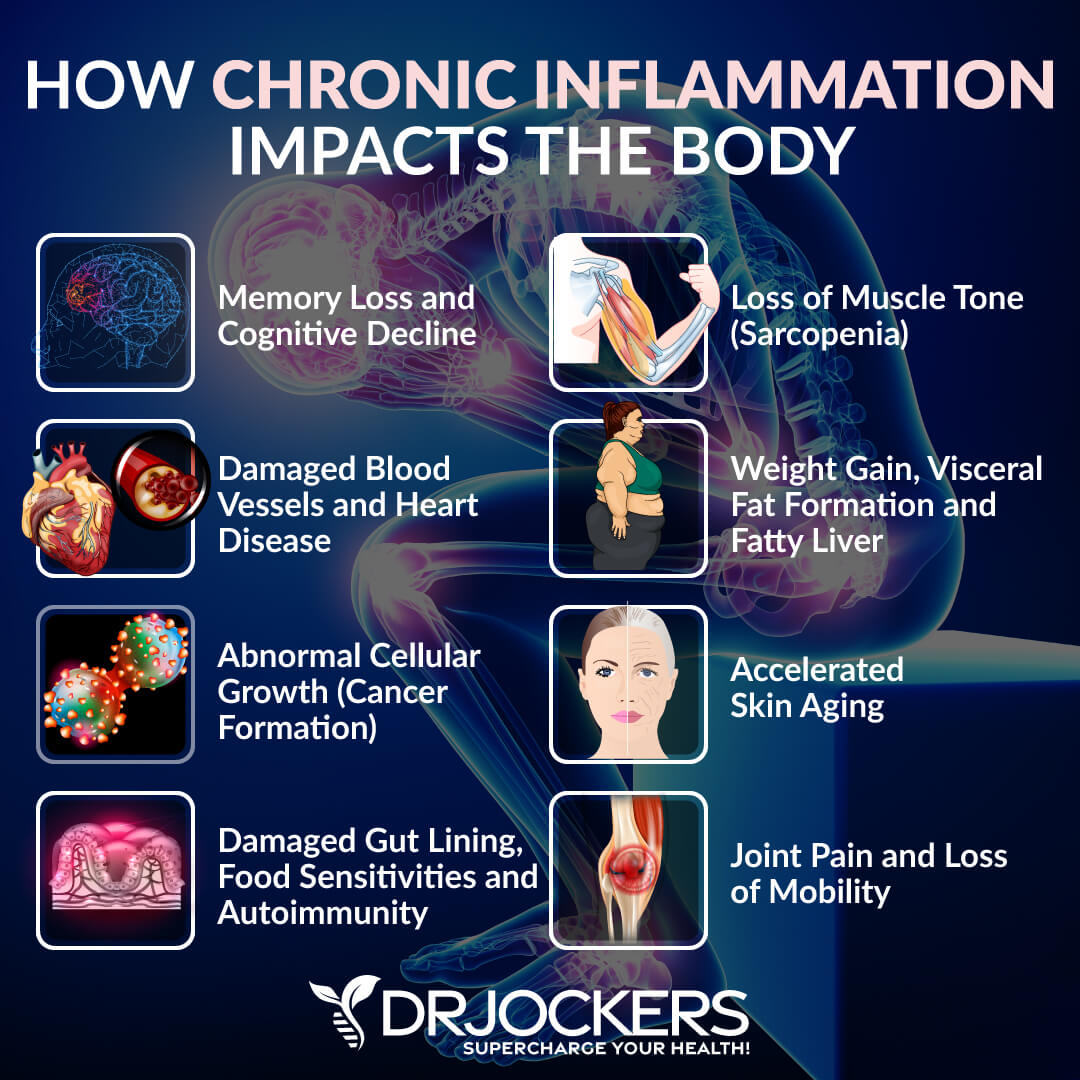
Chemical and Pesticide Exposure
Unfortunately, chemicals, pesticides, and other environmental toxins are part of our modern world and are all around us. The problem is that they can increase chronic inflammation in the body and increase the risk of disease. Chemical and pesticide exposure may also contribute to the development of leukemia.
A 2012 review published in the International Journal of Environmental Research and Public Health has found that benzene, a chemical found in cigarette smoke, may increase the risk of leukemia (16). A 2018 randomized controlled trial published in the International Journal of Cancer has found that benzene may increase the risk of leukemia, lymphoma, and tumors affecting the central nervous system (CNS) (17).
A 2021 meta-analysis and review of nearly 14,000 case-control studies have found that occupational exposure to pesticides may increase the risk of leukemia (18). A 2016 review published in the International Journal of Molecular Sciences and a 2021 systematic review and meta-analysis published in Environmental Pollution both have found that pesticide exposure may increase the risk of leukemia in children (19, 20).
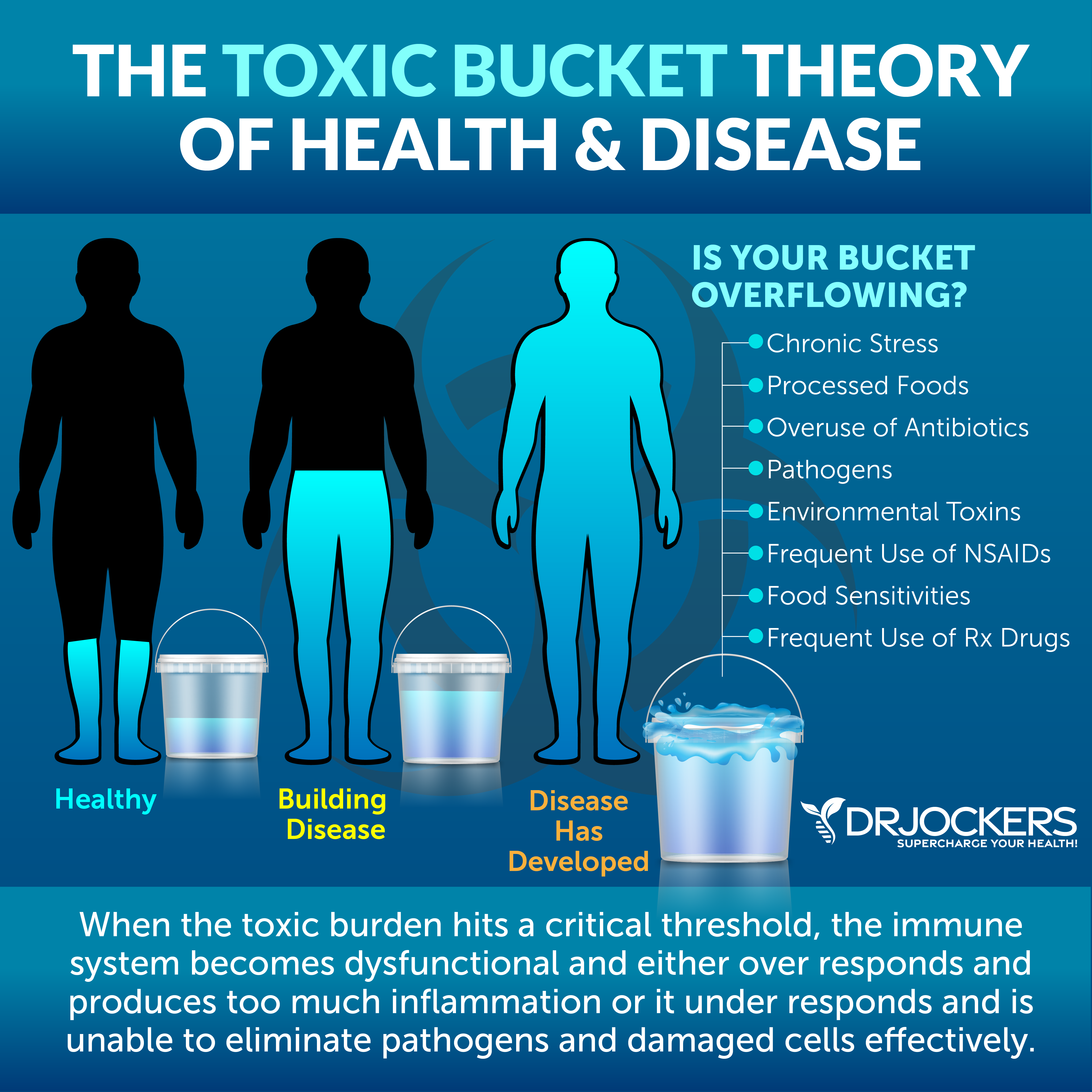
Radiation Exposure
Radiation exposure has a lot of health risks, yet we use radiation in x-rays, CT scans, and even airport security scans. While in certain cases, scans in medical settings are necessary or even lifesaving, they are certainly overused.
It turns out that radiation exposure, especially during childhood, may increase the risk of leukemia. A 2018 review published in Lancet Hematology has found that a low dose of ionizing radiation during childhood can increase the risk of leukemia (23).
A 2018 review published in Lancet Haematology has found that even a low dose of radiation exposure can increase the risk of leukemia (22). Researchers discussed that the risks of radiation, especially in children, have been known for a while, and lead to a reduction of CT scans in children.
In some cases, however, CT scans can be critical for diagnosis, and researchers argue, they may outweigh the risk. Awareness and relying on imaging technology only when absolutely warranted is critical.
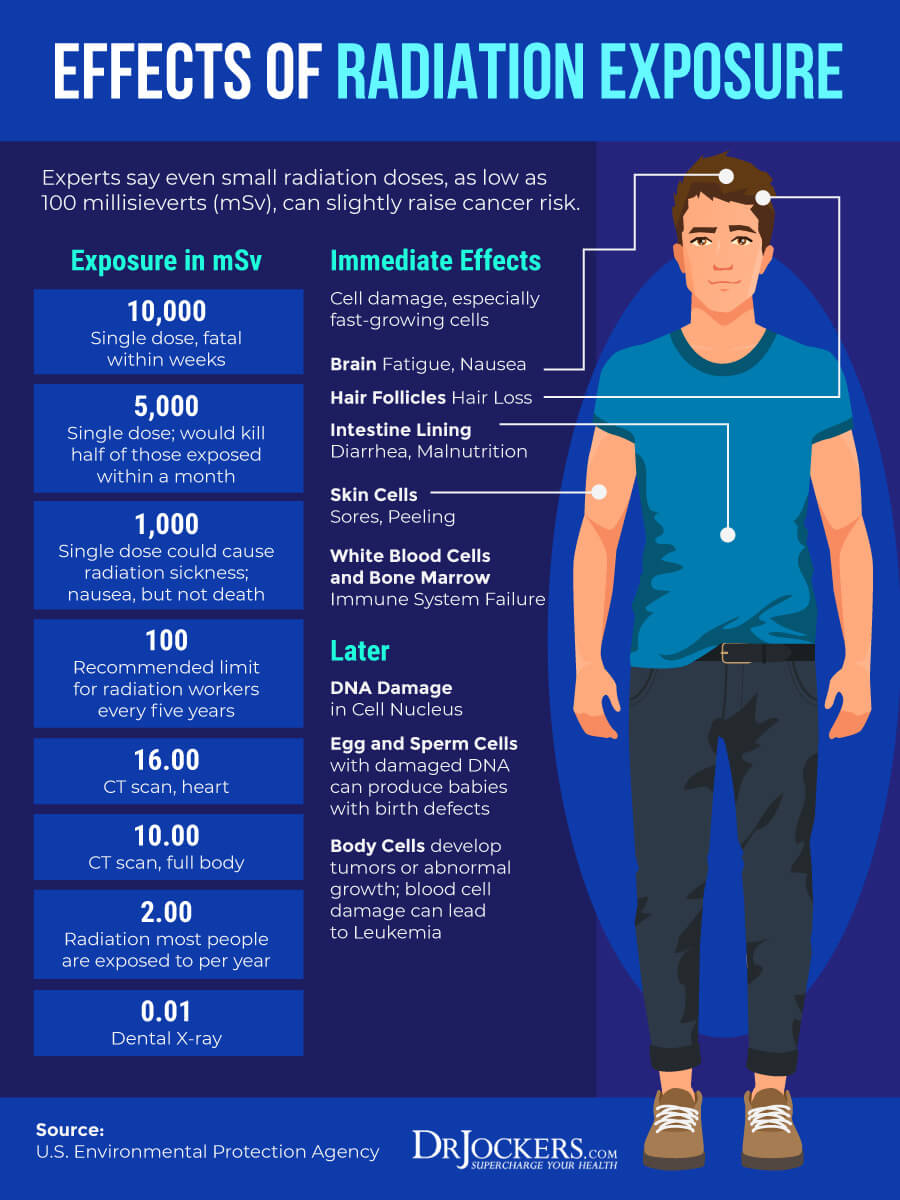
Heavy EMF Fields
Electric and magnetic fields (EMFs) are invisible areas of energy. They are related to the use of electrical power, as well as various forms of lighting, including man-made and natural lighting. EMFs can be grouped into two main categories: non-ionizing and ionizing radiation.
Non-ionizing radiation is low-level radiation from certain appliances and tools, for example, laptops, cell phones, Bluetooth devices, microwaves, and MRIs. Conventionally, they are thought to be relatively harmless to people. Ionizing radiation, such as x-rays and ultraviolet light, on the other hand, is high-level radiation that may be much more harmful.
Heavy exposure to EMFs can increase the risk of all kinds of symptoms and health issues, including leukemia. A 2012 review published in the International Journal of Cancer has found that exposure to high levels of EMFs in children may increase the risk of leukemia (24). A 2003 review published in Environmental Health Perspective has found that EMFs can increase the risk of childhood leukemia (23).
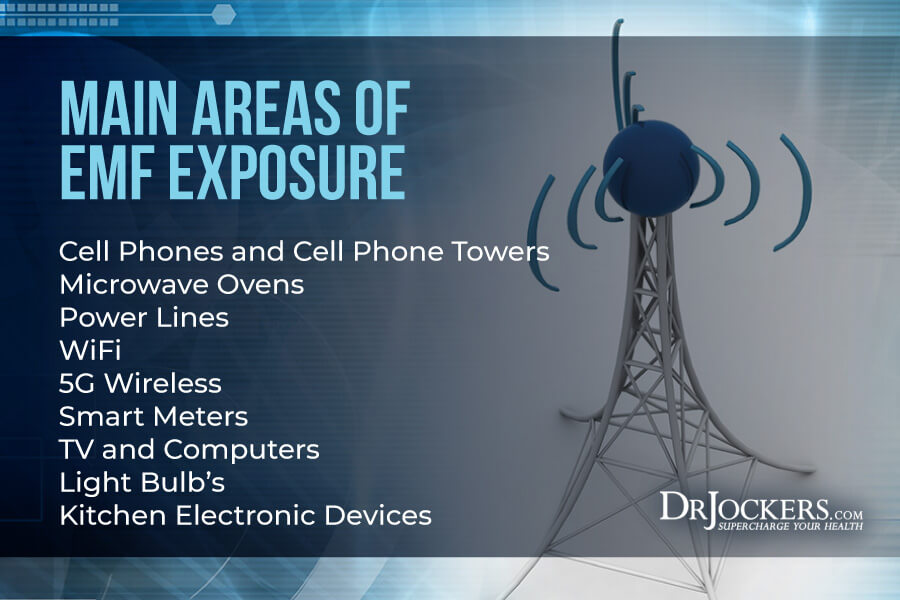
Vitamin D Deficiency
Vitamin and mineral deficiencies can pose a serious health risk. Vitamin D is a critical vitamin for your immune, bone, muscle, brain, and overall health. Research has shown that vitamin D deficiency may also play a role in the development of leukemia.
A 2011 review of clinical trials published in Blood has found that vitamin D deficiency may increase the risk and worsen the outcome of chronic lymphoma leukemia (25). A 2017 study published in the International Journal of Hematology-Oncology and Stem Cell Research has found that vitamin D deficiency is common in people with new acute leukemia and may worsen the outcome (26). A 2019 study published in Nutrition and Cancer has found that vitamin D deficiency may worsen the outcome of leukemia in children (27).
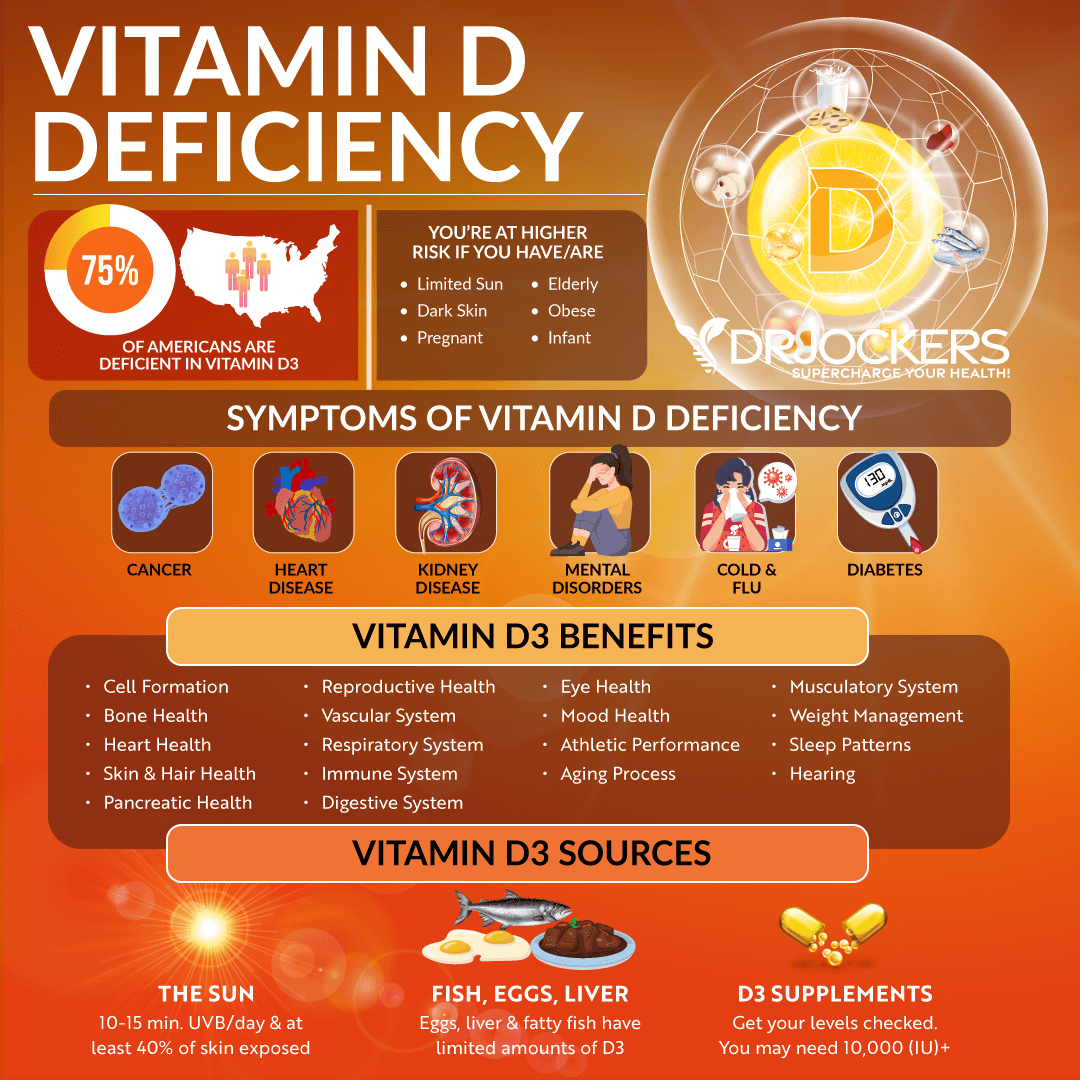
Zinc Deficiency
Zinc is a very important mineral for your immune health, yet deficiencies are common. Research suggests that zinc deficiency may increase the risk of or worsen leukemia.
A 2015 study published in the International Journal of Current Microbiology and Applied Sciences has found that poor zinc and copper levels are common in chronic myelogenous leukemia and may affect the outcome of the disease (28). A 2012 study published in BMJ Archives of Diseases in Childhood has found that zinc deficiency may impact patients with leukemia and lymphoma and supplementation may help (29).

Selenium Deficiency
Selenium is a mineral we don’t talk about enough. It is full of antioxidant properties and is important for your immune, thyroid, heart, and brain health. Deficiencies in selenium can increase the risk of various health issues, including leukemia.
A 2011 study published in the British Journal of Haematology has found that selenium deficiency may be linked to and may worsen the outcome of hematologic malignancies, including leukemia (30). A 2013 study published in Advanced Biomedical Research has found that selenium deficiency is common in chronic lymphocytic leukemia patients (31).
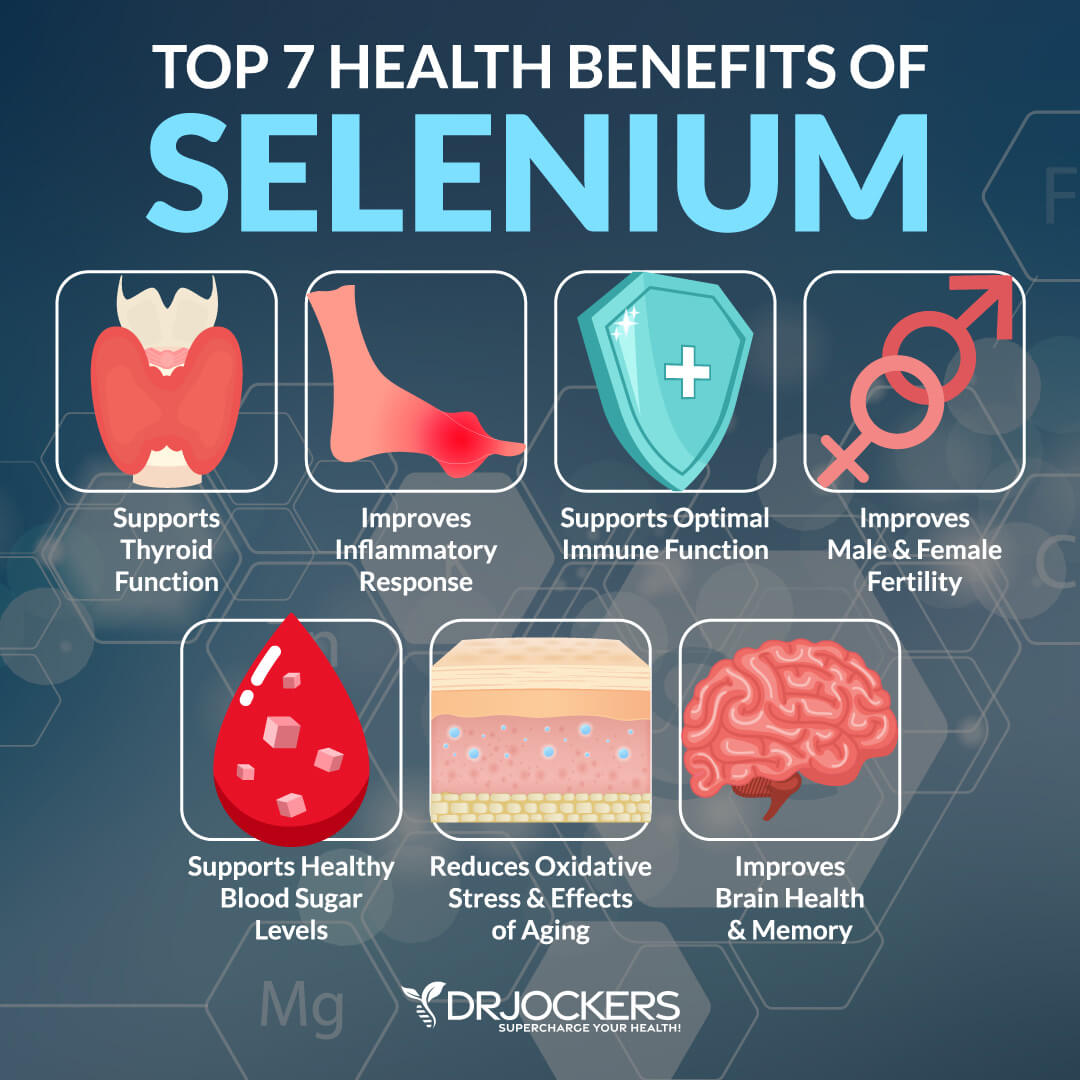
Key Functional Labs
There are a number of key functional labs I use and recommend to determine your risk factors and uncover the root causes of endometrial cancer. Here is what I recommend.
Inflammation: Hs-CRP, ESR, LDH & Serum Ferritin
There are a number of tests I recommend to check for underlying inflammation, including Hs-CRP, ESR, LDH, and serum ferritin testing.
The C-Reactive Protein or CRP test is a key test I recommend. It measures a protein (CRP) produced in your liver that indicates inflammation levels in your body. The clinical range is between 0 and 3 mg/L while the optimal range is 0 to 1 mg/L. When I see levels over 1 mg/L, I know the individual is having an inflammatory response that could be due to acute trauma or chronic conditions.
The erythrocyte sedimentation rate (ESR) is a common hematology test to look for inflammation. It refers to the rate at which your red blood cells in anticoagulated whole blood go down in a standardized tube over a period of one hour. Optimal ESR rates for women under 50 are between 0 and 20 mm/hr, men under 50 are between 0 and 15 mm/hr, women over 50 are between 0 and 30 mm/hr, men over 50 are between 0 and 20 mm/hr, and children between 0 and 10 mm/hr.
Lactate Dehydrogenase (LDH) is an enzyme found in all living cells. Elevated levels may indicate inflammation. Optimal levels are between 140–180. Levels over 180 indicate inflammation.
Serum ferritin measures the level of ferritin in your body to detect iron deficiency anemia and other health issues. Elevated serum ferritin levels may indicate inflammation, liver disease, autoimmune disease, or even cancer. The clinical range is 30 to 400, and the optimal range is 25 to 100 for females and 50 to 150 for males. You can get these labs done on our Comprehensive Blood Analysis here.
Insulin Resistance: Fasting Insulin, HbA1C, Lipid Profile
I recommend a number of tests to check for insulin resistance, including fasting insulin levels, HbA1C, and a lipid profile.
Blood sugar imbalances may increase your risk of inflammation. In addition to testing your HbA1C levels, I recommend checking your fasting insulin levels. Testing your fasting insulin can recognize elevated blood sugar levels and can detect inflammation, insulin resistance, blood sugar issues, and diabetes. The clinical range for fasting insulin is 2.6 – 24.9 uIU/ml and the optimal range is 1.0 – 5.0 uIU/ml.
Blood sugar imbalances are one of the main causes of inflammation, so I recommend checking your hemoglobin A1C (HbA1C) levels. Your HbA1C levels measure your average blood sugar over the past 2 to 3 months. Hemoglobin A1C (HbA1c) gives the average amount of glucose in your blood or blood sugar over the past 3 months making it one of the top tests for inflammation and diabetes. The clinical range is between 4.8 and 5.6 while the optimal range is 4.5 – 5.2.
Having a balanced ratio of LDL to HDL and triglycerides to HDL is essential for your health. We are looking for low HDL or high triglycerides as a sign of insulin resistance. Ideally, we are looking for an LDL: HDL ratio: 3:1 or less, 2:1 being optimal. For triglycerides, we are looking for an HDL ratio: 2:1 or less, 1:1 being optimal. Higher rates may indicate insulin resistance and inflammation. Optimal levels:
- VLDL cholesterol: The ideal range is 5 to 30 mg/dl.
- HDL cholesterol: The ideal range is 55 to 80. Levels above 100 can indicate chronic inflammation or active infection in the body.
- Triglycerides: The ideal range is 40 to 80.
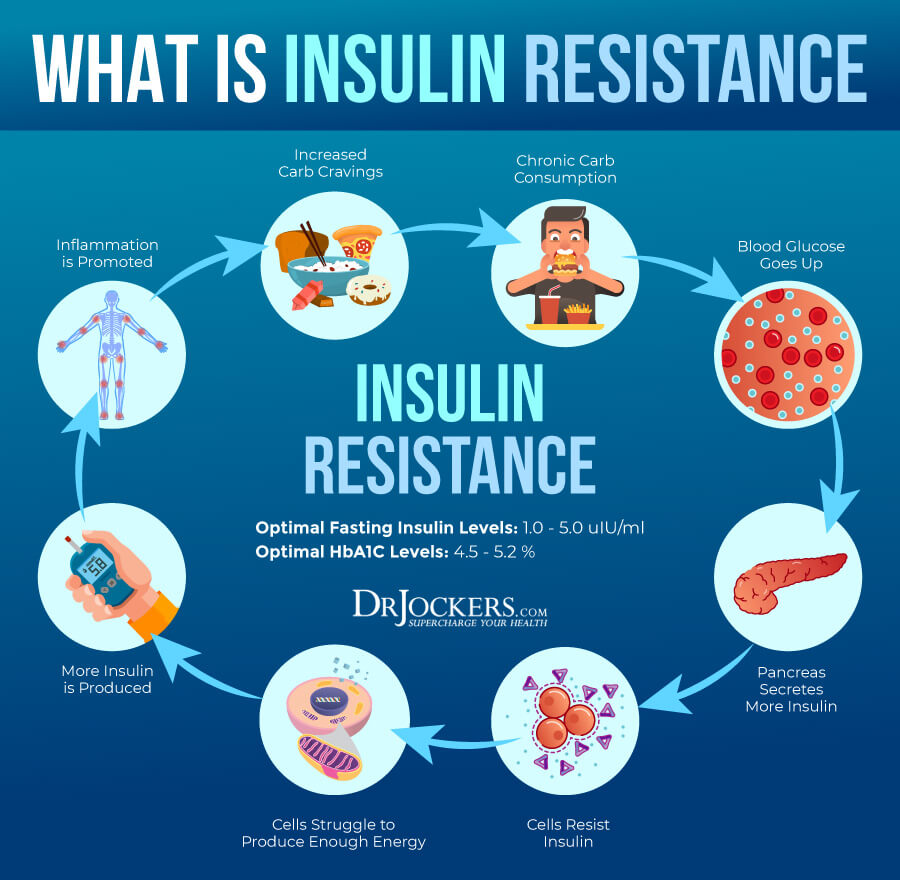
Vitamin D, Plasma Zinc: Serum Copper Ratio
Since vitamin D and zinc deficiencies and high copper levels may increase the risk of endometrial cancer, I recommend checking your vitamin D and zinc: serum copper ratio.
Vitamin D3 is an important vitamin that most of our population is deficient in. Poor levels may indicate inflammation. Normal levels of vitamin D are 50 nmol/L (20 ng/mL) or more, while optimal levels are over 75 nmol/L (30 ng/mL).
Checking your plasma zinc levels is the best way to determine zinc levels in your body. Ideal plasma zinc levels are between 90–135 ug/dL and for serum copper it should be 70–110 ug/dL. Zinc and copper compete against each other as antagonists to regulate physiological pathways. A proper balance between the two is essential for maintaining good health. I recommend checking your plasma zinc and serum copper levels and their balance. The proper zinc:copper ratio should be between 1–1.2.
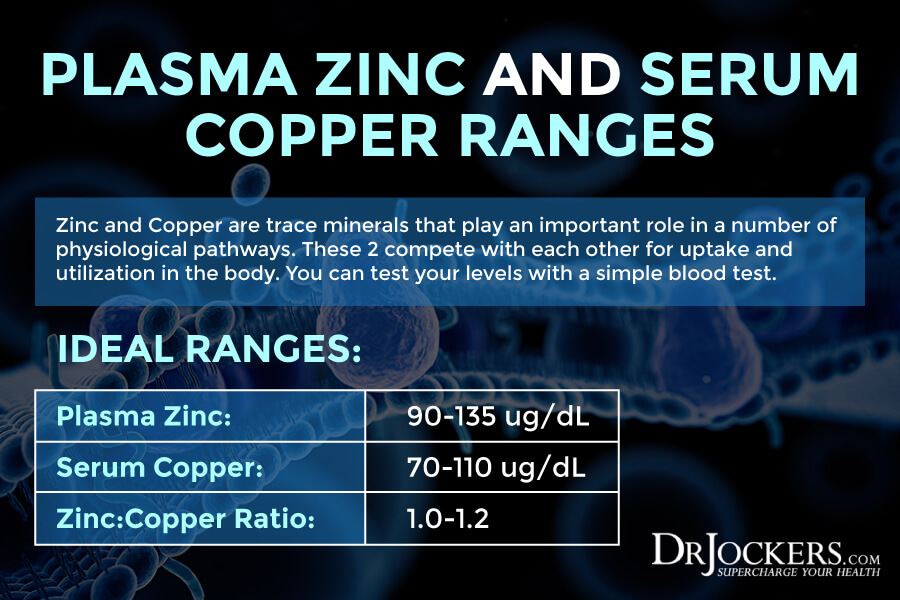
Natural Support Strategies
Understanding the functional root causes of leukemia is critical for understanding how to reduce your risks and support your body through recovery. Here are the top natural support strategies I recommend:
Anti-Inflammatory Nutrition Plan
Chronic inflammation is one of the main functional root cause factors that may contribute to or worsen leukemia (12, 13, 14, 15). An anti-inflammatory nutrition plan may help. A 2019 study published in PLoS One has found that an inflammatory diet may increase the risk of cancer whereas an anti-inflammatory nutrition plan may reduce it (32). A 2018 study published in the Journal of Translational Medicine has found that an anti-inflammatory diet may improve the immune response against cancer, support the gut microbiome, and reduce the risk and mortality of various cancers (33).
I recommend removing all inflammatory foods, including refined sugar, refined oil, gluten, conventional dairy, processed and canned meat, additives, artificial ingredients, non-organic produce with pesticides or hormones, junk food, and highly processed foods. Since cancer feeds on sugar, eating a low carbohydrate diet is critical. If you are looking for sweetness, choose low-glycemic index, high-antioxidant berries instead of high-glycemic index foods.
Follow an anti-inflammatory nutrition plan with plenty of greens, vegetables, herbs, spices, fermented foods, grass-fed meat and butter, pasture-raised poultry and eggs, organ meats, wild-caught fish, and wild game. Eat plenty of healthy fats, including omega-3-rich fish and seafood, nuts and seeds, avocados, grass-fed butter and ghee, olives, and coconut oil. Make anti-inflammatory and antioxidant-rich herbs and spices your friend, including turmeric, ginger, cinnamon, basil, rosemary, dill, cloves, cayenne pepper, black pepper, onion, and garlic.
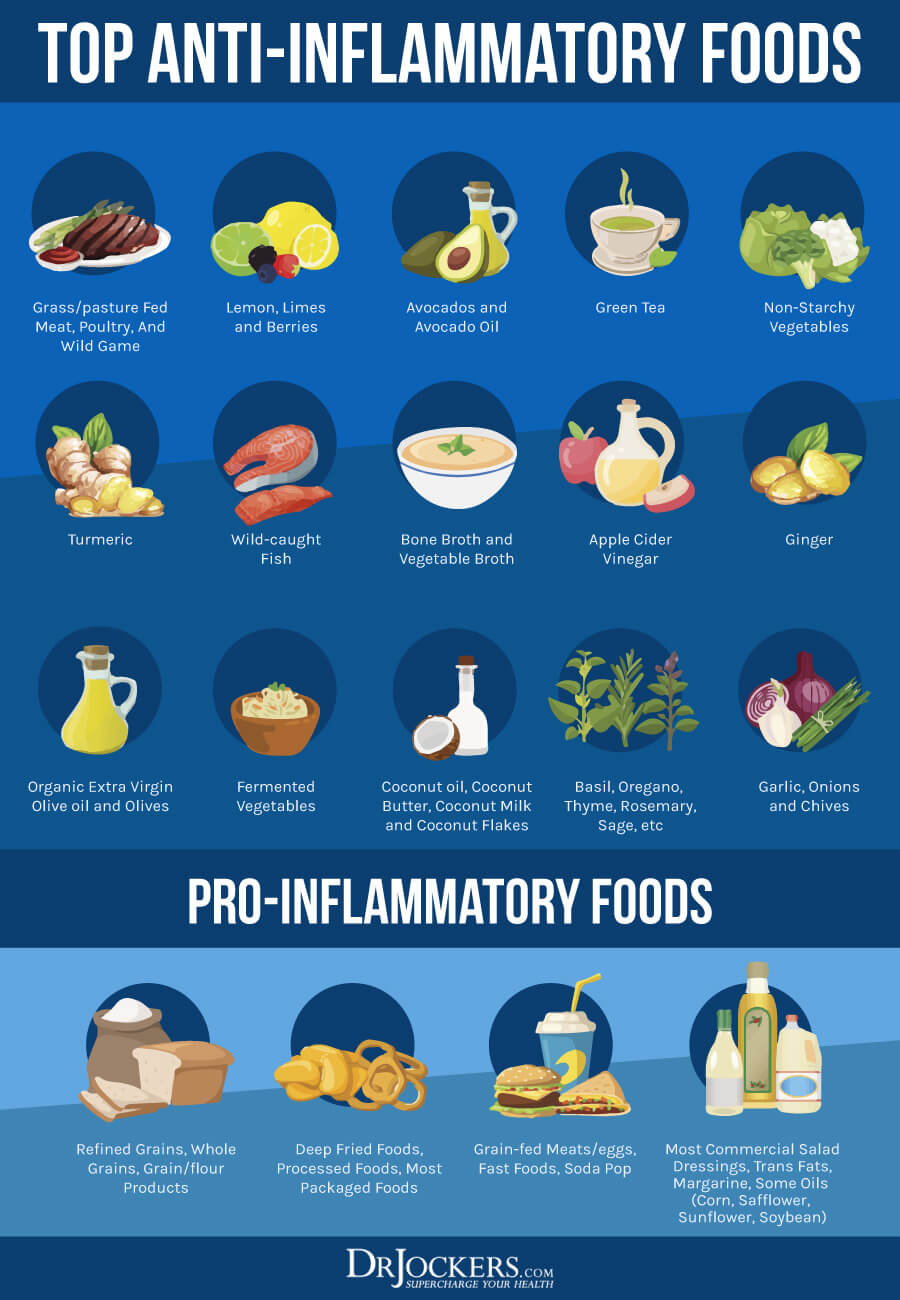
Consider Getting into Ketosis
Unless you are following a high-fat diet, your body burns glucose (sugar) for energy. When your body doesn’t have enough dietary sugar to burn for energy as a result of carbohydrate restriction, caloric restriction, or fasting, it will turn to fat for energy instead and starts to make ketones in the process. Ketosis has many health benefits, from reduced inflammation, increased insulin sensitivity, improved cellular renewal to a decreased risk of disease. It may also reduce the risk of cancer and cancer-related mortality.
A 2018 study published in the Journal of Translational Medicine has found that one of the anti-inflammatory diets that may improve the immune response against cancer and reduce the risk and mortality of various cancers is the ketogenic diet (33). A 2017 review published in Federal Practitioner has found that a low-carbohydrate ketogenic diet may help to starve cancer cells while still nourishing healthy cells (34).
Researchers found that the keto diet is a safe option and may be used alongside conventional strategies, such as chemotherapy or radiation, to help improve tumor response and improve outcomes (34). A 2020 study published in Molecular Metabolism has also found that the keto diet is well-tolerated by cancer patients, may help to improve health and quality of life, and can work well along with conventional treatment strategies as well (35).
One of the best and easiest ways to achieve ketosis is by following a ketogenic or keto diet. The keto diet is a high-fat, low-carb diet with carbohydrate levels very low at 5 to 10 percent, protein levels moderate at 30 to 35 percent, and fats high at 55 to 60 percent of your calories.
If you are following a ketogenic diet, it is critical that you follow a real food keto diet. Keeping to your macronutrient ratios, keeping your fats at very high, carbs at very low, and protein at moderate levels, is necessary for achieving ketosis. However, it is not enough for health. Loading up on high-fat, low-carb, keto-friendly, such as low-nutrient junk foods, such as a burger with cheese without the bun or chicken deep-fried in refined oil with a diet soda may be convenient and keto-approved but can be detrimental to your health. Real food micronutrients are just as important as your macronutrient ratios to improve your immune health, support your gut flora, boost your health, and fight cancer and other diseases.
Follow an anti-inflammatory as outlined in the earlier section while keeping in mind ketogenic principles and ratios. Most of your diet should be abundant in healthy fats, including avocados, coconut oil, coconut butter, coconuts, avocado oil, extra-virgin olive oil, pasture-raised butter and ghee, lard, flax seeds, hemp seeds, chia seeds, pumpkin seeds, other seeds, olives, nuts, and any fats from clean animal foods, such as grass-fed beef, pasture-raised poultry and eggs, wild-caught fish, and wild game.
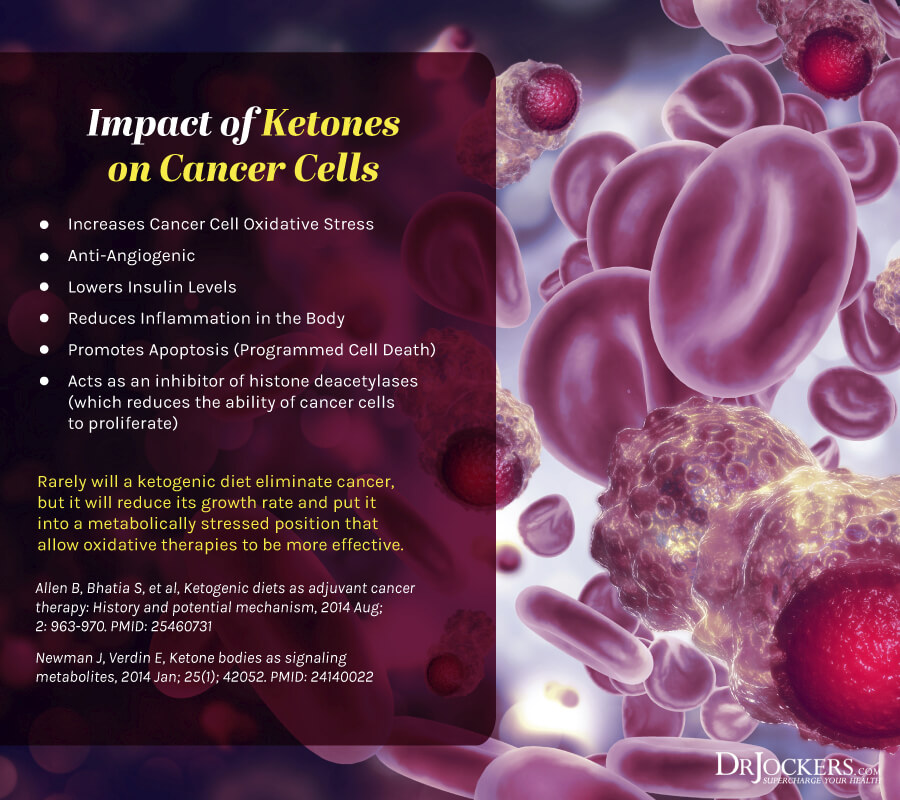
Practice Intermittent Fasting
Intermittent fasting is a form of fasting that cycles between periods of fasting (not eating) and feasting (eating) within one day. It is a great way to complement a ketogenic diet, support ketosis, reduce inflammation, improve cellular rejuvenation, and protect your health.
A 2016 study published in Nature Medicine has found that fasting may help to kill cancer cells and reduce the development of childhood acute lymphoblastic leukemia (36). A 2017 study published in Nature Medicine has also found that fasting may help to starve cancer cells in leukemia (37). A 2021 study published in Cancer Control has found that intermittent fasting may help patients of chronic myeloid leukemia receive tyrosine kinase inhibitors (TKIs) for treatment (38).
If you are new to intermittent fasting, start with 12 hours of fasting, including your overnight sleep. Gradually increase your fasting period over time. Most people feel the best with 16 hours of fasting a day. However, you may feel your best with a slightly longer or shorter fasting window. You can learn more about intermittent fasting and the keto diet by searching my website.
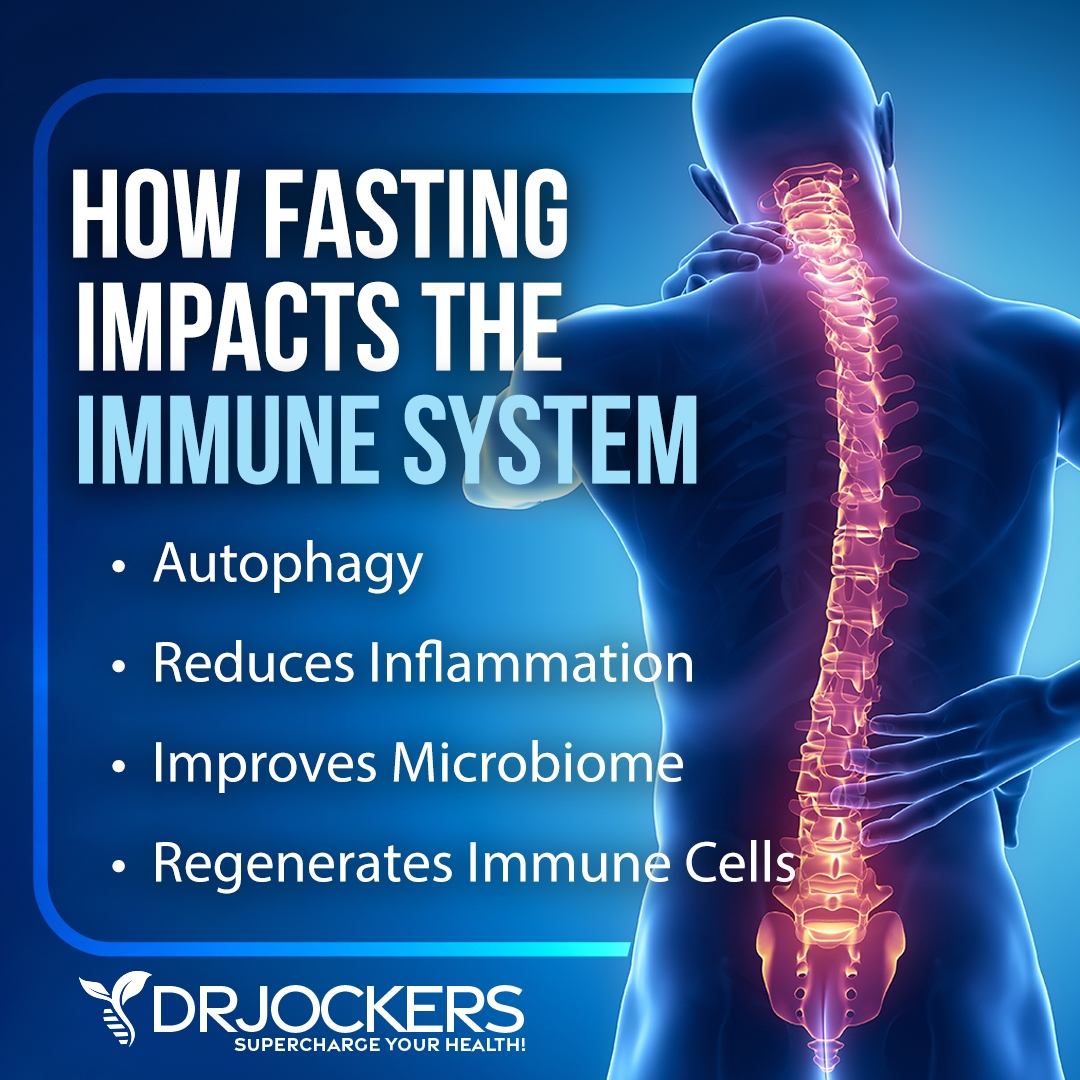
Improve Detoxification Pathways
Chemical and pesticide exposure may also contribute to the development of leukemia (16, 17, 18, 19, 20). Reducing chemical, pesticide, and toxin exposure and improving your detoxification pathways is critical.
Avoid smoking and second-hand smoke, choose organic food and organic, natural products, and reduce any other exposure to chemicals or toxins. Use activated coconut charcoal to remove toxins from your intestinal tract. Follow an antioxidant-rich, anti-inflammatory nutrition plan and take high-quality probiotics and to improve your body’s ability to fight toxins and to support elimination.
Drink lots of water to support detoxification through sweating and urine. Try infrared saunas to promote detoxification through sweating. Practice rebounding and dry-skin brushing to support your lymphatic pathways. Support your two major detoxifying organs, your kidneys and liver, with kidney and liver support supplements.
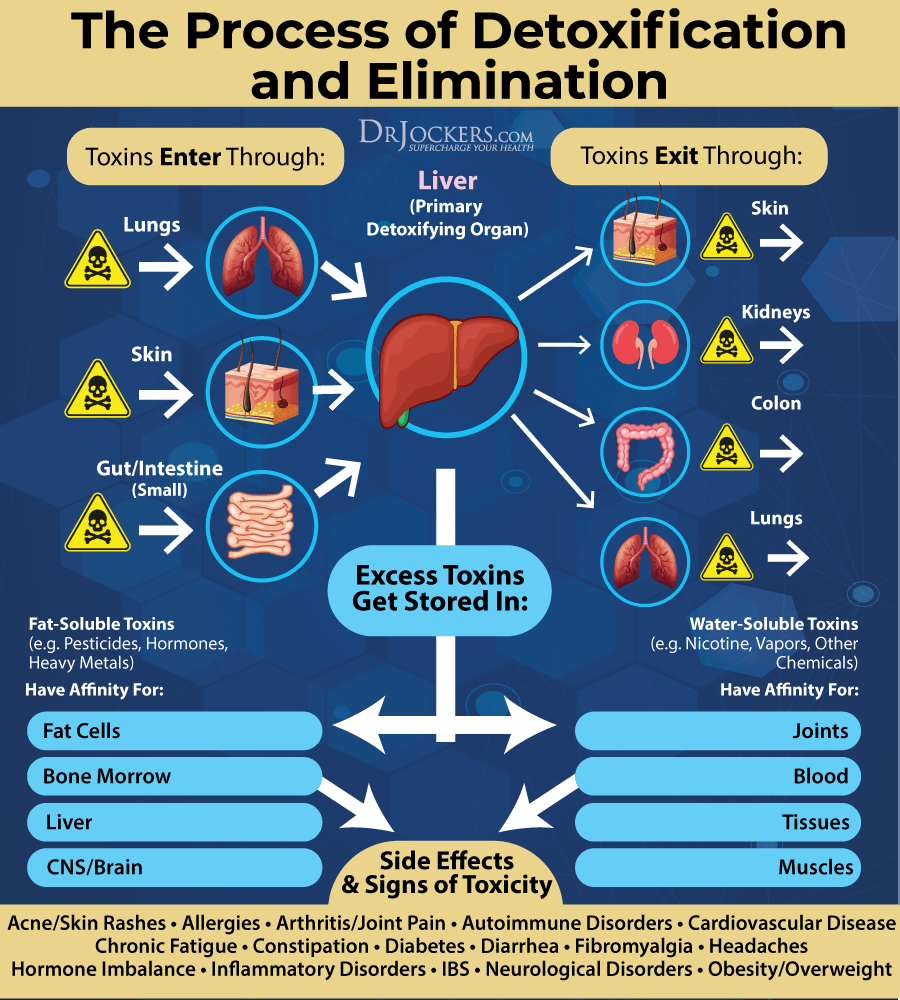
Reduce EMF Exposure
Heavy EMF fields and radiation exposure can increase your risk of leukemia. It may be particularly problematic for children (23, 22, 24, 23). Reducing your EMF exposure may benefit your health. Follow the following steps to lower your EMF exposure throughout your day:
- Keep your phone, other devices, and appliances off or on airplane mode as much as you are able to.
- Use hard-wire internet connections instead of WiFi whenever it’s possible.
- Limit your WiFi use to the necessary minimum.
- Turn off your WiFi router at night and whenever you are not using it.
- Use hard-wire computer peripherals instead of wireless or Bluetooth connections whenever possible.
- Make sure that the electrical wiring of your home is done properly.
- Keep your electronic devices, such as your cell phones, computers, and tablets as far from your body as possible.
- Avoid carrying your cell phone in your pocket.
- Do not use your cell phone when it is charging.
- Switch off your cell phone when you go to bed at night.
- Keep your cell phone and other devices out of your bedroom.
- Sleep away from any circuit breakers or large appliances that may be running overnight.
- Use dirty electricity filters to filter out dirty electricity.
- Choose landlines or face-to-face contact whenever possible.
- Put your cell phone on airplane mode when you are not using its wireless functions.
- Use earphones (not a Bluetooth headset) so you don’t have to put your cell phone close to your head.
- Choose to text instead of calling a person for little things.
- Avoid making or receiving calls in places with bad reception.
- If a long conversation is in place, opt to meet in person directly or call on a landline.
- Minimalize your use of cell phones, computers, and other digital devices.
- Take regular digital detoxes. For example, taking Sundays offline may be a great idea.
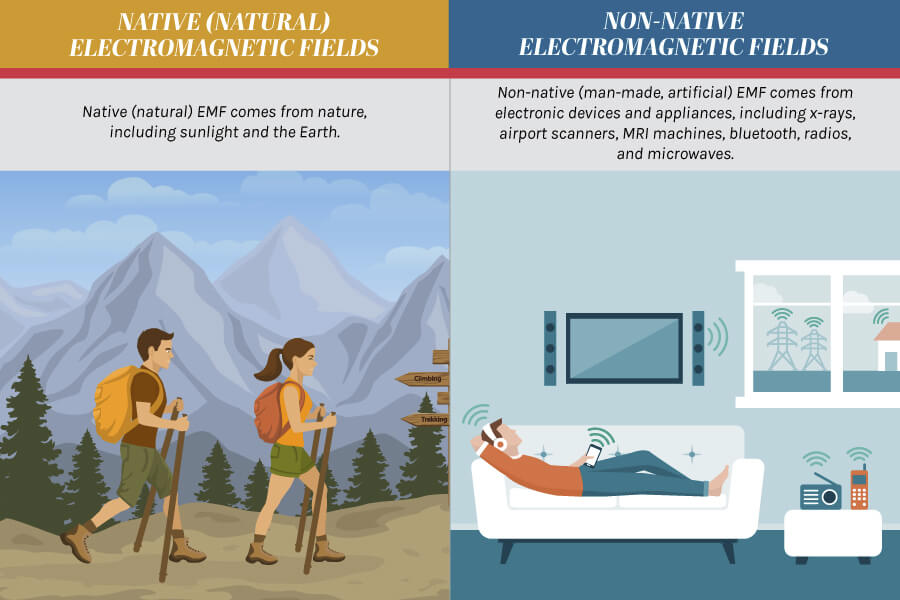
Optimize Vitamin D Levels
Vitamin D is essential for your muscle, bone, brain, neurological, mental, immune, and gut health. Unfortunately, most of the population is deficient in it, which can lead to serious problems, including an increased risk of leukemia and other cancer and poor outcomes. A 2016 study published in the European Journal of Haematology has found that vitamin D supplementation may benefit those with hematological disorders (39). A 2021 study published in Cancers (Basel) has found that vitamin D may help to improve immune signaling in patients with chronic lymphocytic leukemia (40).
Most people are not getting enough sunshine or consuming enough vitamin D from food. Therefore, most people need supplements to optimize their vitamin D levels. Pairing vitamin D3 with vitamin K2 helps improve calcium absorption and inflammation control. I recommend taking a vitamin D3 supplement with at least 3,000-5,000 IU’s of vitamin D3 and at least 90 mcg of vitamin K2.
Typically, taking 1,000 IU per 25 lbs. of body weight will help you get your levels into a healthy range. You want to test your vitamin D levels at least 1-2 times each year and get your levels between 50-100 ng/ml. It has been hypothesized that a therapeutic level for major health conditions is going to be between 70-100 ng/ml.
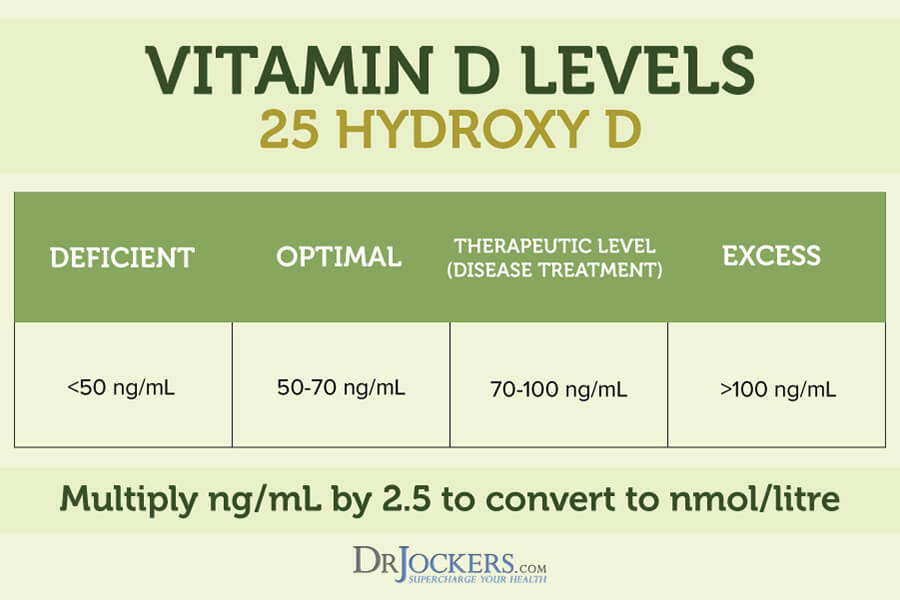
Optimize Zinc Levels
Zinc is a critical mineral for your immune system. Yet deficiencies are common and may increase the risk of leukemia and poor outcomes. Zinc supplementation may help to improve your health.
A 2005 case report published in Medical Hypothesis has found that zinc may help to improve acute lymphocytic leukemia alongside chemotherapy and radiation (41). A 2013 study published in the European Journal of Clinical Nutrition has found that supplementing with zinc may be beneficial for children and adults with acute leukemia (42).
Zinc-rich foods I recommend adding in your diet include grass-fed lean meat, pasture-raised poultry, nuts, seeds, oysters, peas, and chickpeas. Additionally, I recommend that you take a high-quality zinc supplement.
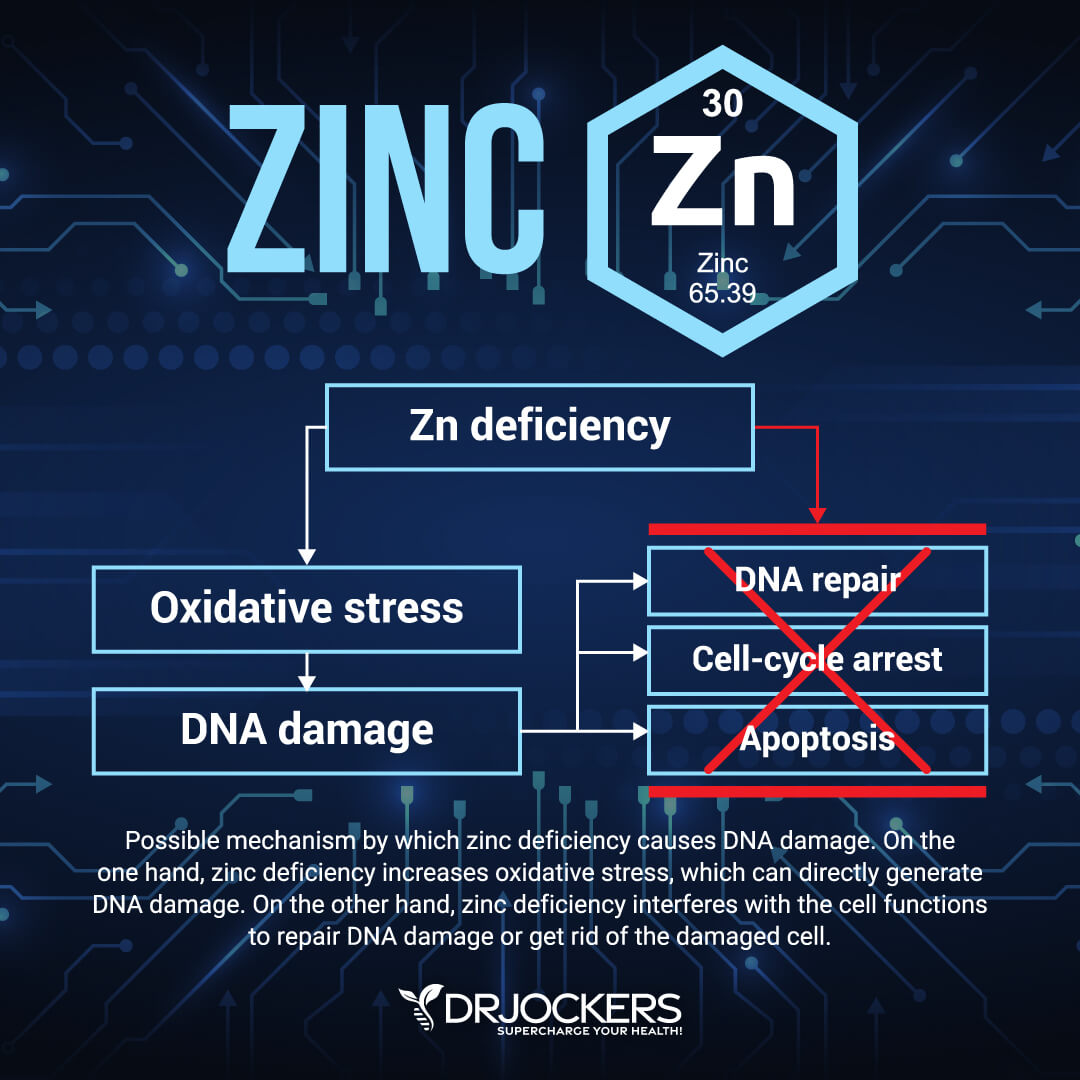
Consider Using Turmeric or Curcumin
Curcumin is the active compound of one of the most researched anti-inflammatory herbs, turmeric. Due to its anti-inflammatory and pain-relieving benefits, curcumin may be a great option for supporting your health through leukemia.
A 2016 study published in the Asian Pacific Journal of Cancer Prevention has found may trigger apoptosis, or cell death, thus supporting the treatment of acute lymphoblastic leukemia (43). A 2019 review published in the Journal of Cell Physiology has found that curcumin may be a beneficial therapeutic agent for those with leukemia (44). A 2021 study published in Oncology Reports has also found that curcumin may support apoptosis in leukemia (45).
I recommend adding turmeric to your curries, soups, vegetable dishes, dressings, sauces, juices, and smoothies. I also recommend daily supplementation with a high-quality curcumin supplement. Taking curcumin supplements with black pepper is a great idea since black pepper helps absorption.
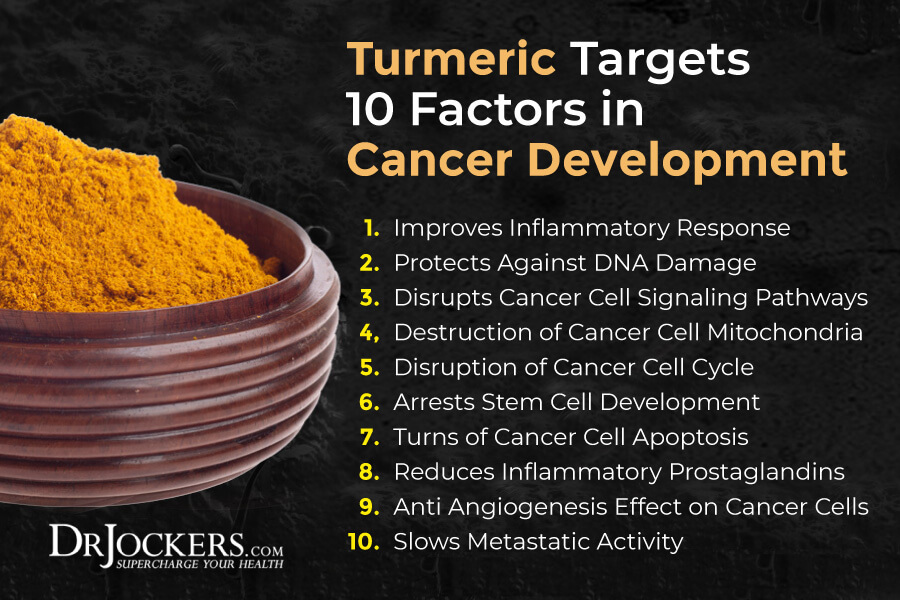
Consider Using Quercetin
Quercetin is a powerful plant flavonol with antioxidant and anti-inflammatory properties. It may also benefit those with leukemia.
A 2020 study published in Frontiers in Pharmacology has found that quercetin may offer anti-cancer properties and trigger apoptosis in leukemia (46). Another 2021 study published in Nutrition and Cancer has found that quercetin and curcumin used together may induce apoptosis and serve as a therapeutic agent in chronic myeloid leukemia (47).
I recommend eating foods rich in quercetin. Quercetin-rich foods include red leaf lettuce, kale, chicory greens, red onions, asparagus, cabbage, sprouts, various herbs, cruciferous vegetables, peppers, olive oil, cranberries, blueberries, chokeberries, black currants, cherries, and black plums. I also recommend supplementing with quercetin daily.
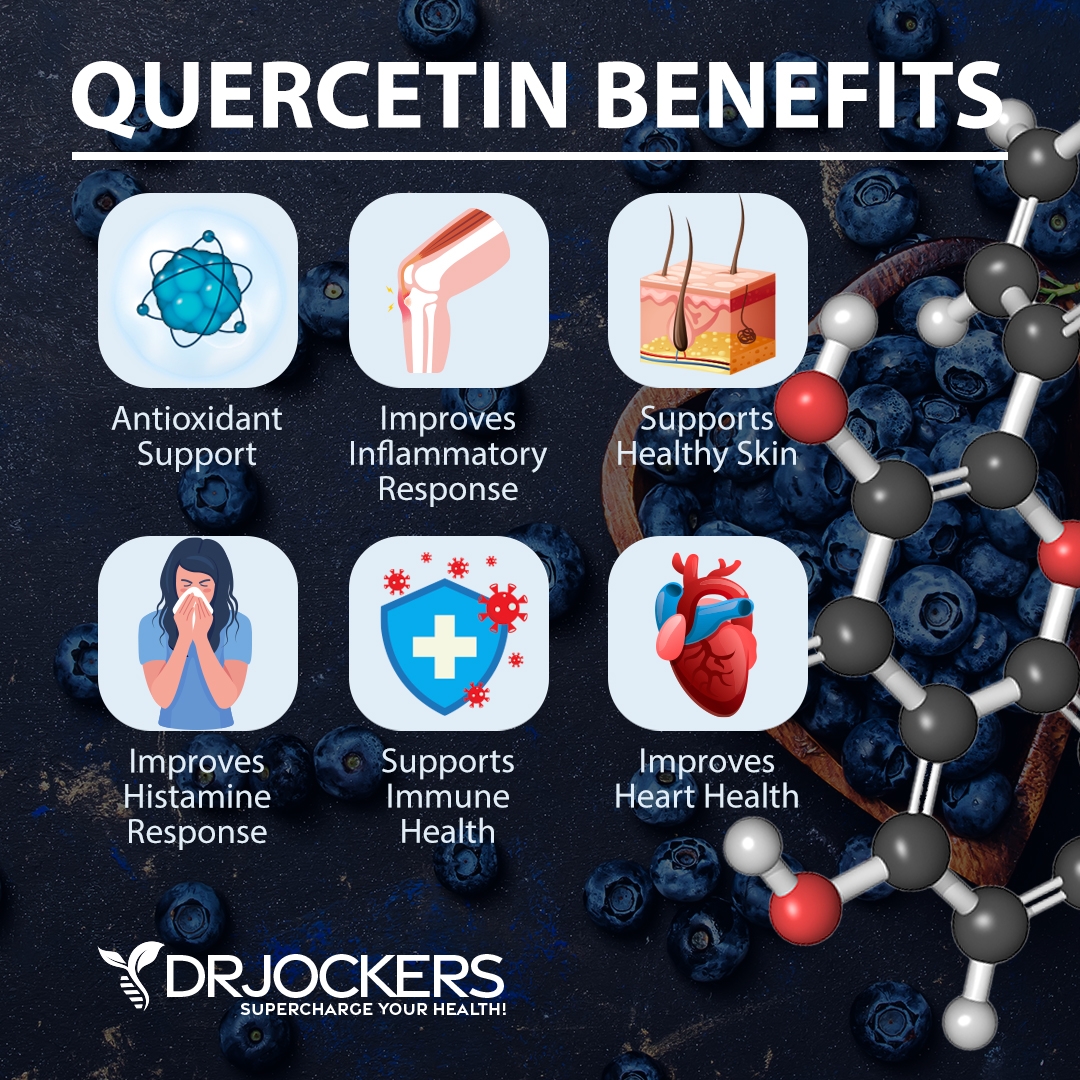
Consider Using Resveratrol
Resveratrol is a plant compound found in the skin of red grapes, berries, pistachios, peanuts, and cacao. It offers anti-inflammatory and antioxidant properties that may be beneficial against and support your recovery from many health issues. It turns out, resveratrol may be beneficial for those with leukemia.
A 2015 study published in Acta Pharmacologica Sinica has found that resveratrol can cause apoptosis in chronic myelogenous leukemia cells and may benefit those with leukemia (48). A 2019 review published in Chemico-Biological Interactions has found that resveratrol may improve cell proliferation, apoptosis, and autophagy and serve as an anti-leukemia agent improving outcome and survival in those with leukemia (49).
I recommend eating resveratrol-rich berries and pistachios. I also recommend supplementing with resveratrol daily to experience the combined benefits of resveratrol, quercetin, and curcumin, you can find inflammation defense supplements with all three in them.
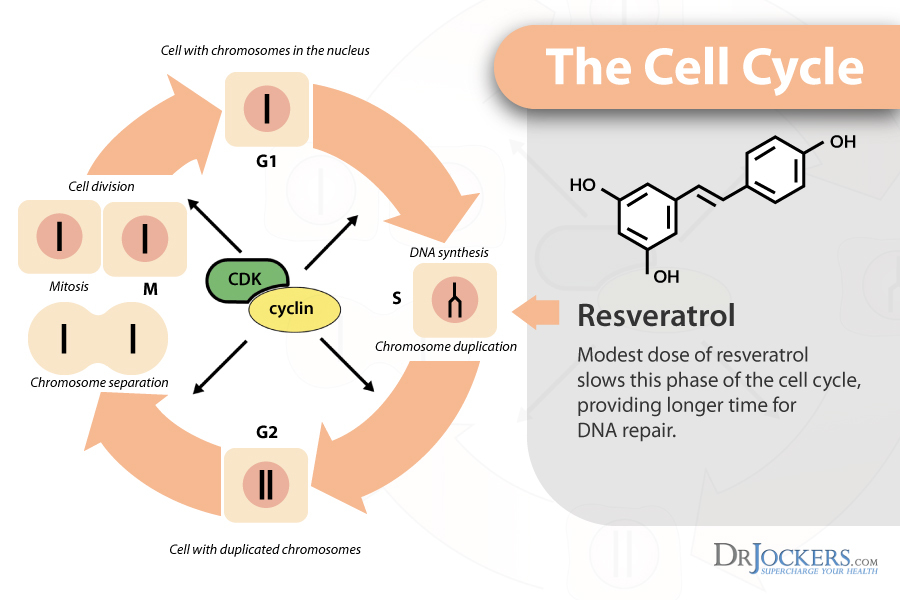
Final Thoughts
Leukemia is a cancer of your blood cells. If you have leukemia, your white blood cells are not functioning optimally, compromising your immune system’s ability to protect you from viruses, bacteria, and other pathogens. Receiving a leukemia diagnosis can be scary. However, you can support your body through natural methods to enhance your health. I recommend that you follow my top natural support strategies for leukemia to support your health and well-being.
If you want to work with a functional health coach, I recommend this article with tips on how to find a great coach. Our website offers long-distance functional health coaching programs with our world-class team of health coaches. For further support with your health and other goals, just reach out—our fantastic coaches are here to support your journey.
Inflammation Crushing Ebundle
The Inflammation Crushing Ebundle is designed to help you improve your brain, liver, immune system and discover the healing strategies, foods and recipes to burn fat, reduce inflammation and Thrive in Life!
As a doctor of natural medicine, I have spent the past 20 years studying the best healing strategies and worked with hundreds of coaching clients, helping them overcome chronic health conditions and optimize their overall health.
In our Inflammation Crushing Ebundle, I have put together my very best strategies to reduce inflammation and optimize your healing potential. Take a look at what you will get inside these valuable guides below!
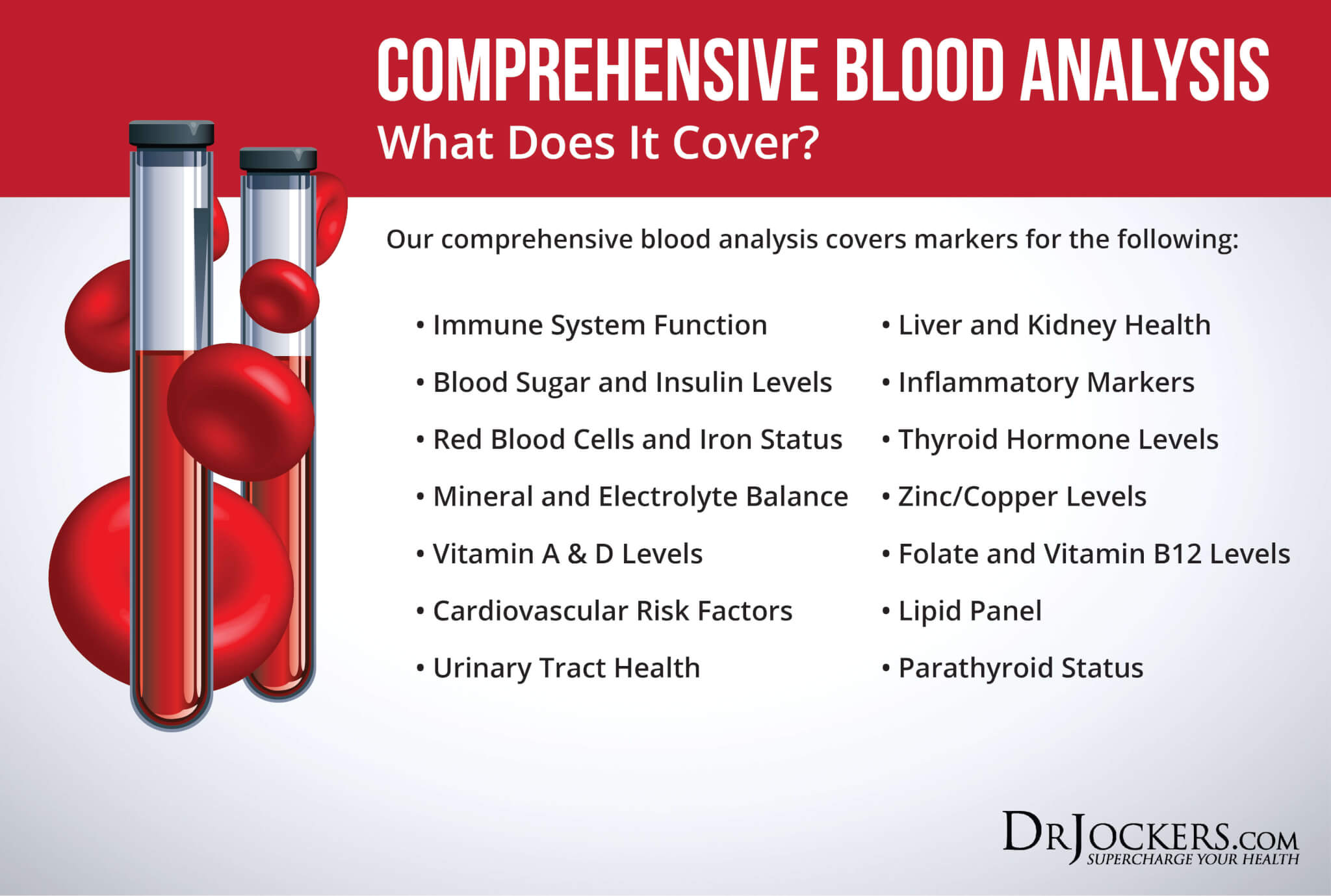

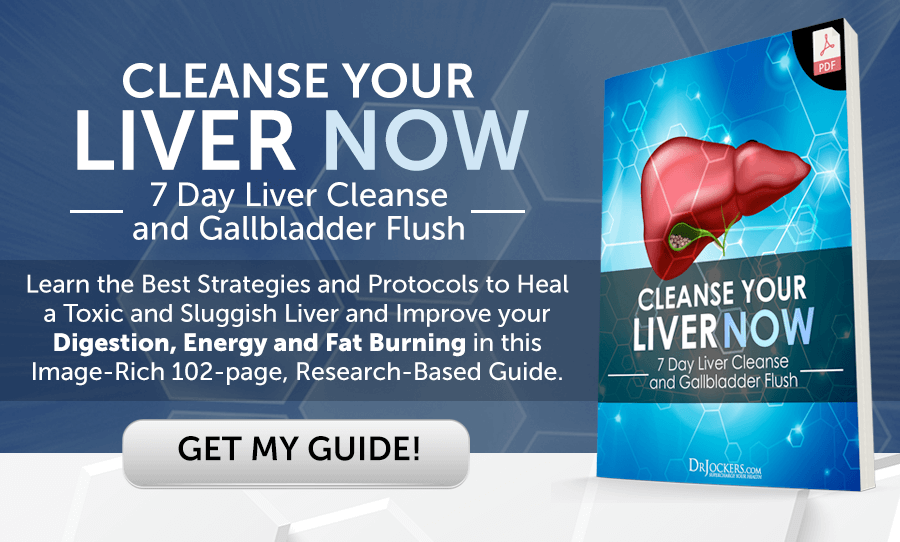


Budwig is very powerful against leukemia!
https://budwig-videos.com/testimonials/testimonials-cancers/leukemia/
As is grape seed extract.
https://pubmed.ncbi.nlm.nih.gov › 24129601
https://pubmed.ncbi.nlm.nih.gov › 35116693
Black seed oil
https://www.ncbi.nlm.nih.gov › pubmed › 28415607
Thank you for sharing!
I will like some quality supplements mentioned as I have chronic myloid leukaemia and I live in Australia I am looking for brands easily accessible to me. Thank you so much for the information and diagrams I am encouraged